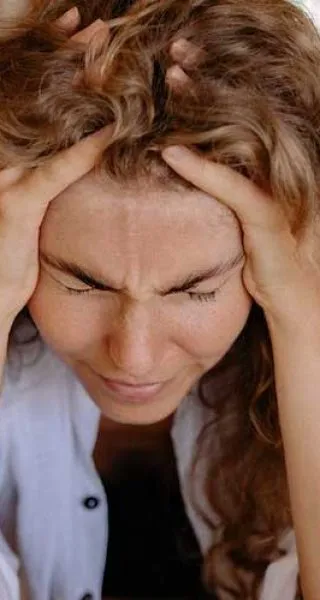Feeling down sometimes is part of life, and many things can make us feel sad, frustrated, or anxious. But what happens when you or a loved one experiences these feelings persistently and self-care is no longer there?
- What Is Depression
- Types Of Depression
- What Are The Signs And Symptoms Of Depression
- How Long Does Depression Last
- What Is A Depressive Episode
- How Long Do Depressive Episodes Last
- Causes Of Depressive Episodes
- Can Depression Go Away On Its Own
- What Is The Highest Stage Of Depression
- Is Depression A Permanent Problem Or Can It Be Cured
- How Is Depression Treated
- Psychotherapy
- Medication
- Other Methods Of Treating Depression Symptoms
- Where Can I Seek Treatment For Depression
If you are wondering about depression symptoms and how long depression can last, this blog may help you find some answers.
What is Depression?
Depression is a persistent sadness or a lack of interest in pleasure, that causes symptoms that interfere with the way someone thinks, feels, and interacts in daily life. Also known as major depressive disorder or clinical depression, this mental illness or mental disorder can affect the way someone sleeps, eats, or works.
Different types of depression have different symptoms and durations of lasting.
Types of Depression
The two most common kinds of depression are major depression and persistent depressive disorder or dysthymia.
Major depression includes depression symptoms for more or less two weeks, affecting patterns of behavior that are crucial, like eating, studying, sleeping, or working. Major depressive disorder involves severe feelings of worthlessness and cognitive impairments with a persistent depressed mood, daily. Considered a mood disorder, it is believed to have biological and environmental causes, and someone could go through severe and mild depression symptoms throughout their life.
Persistent depressive disorder or dysthymia involves less severe symptoms that last much longer, usually for at least two years. As a chronic form of depression, a person may feel hopeless and unproductive, have very low self-esteem, and feel inadequate. This mild depression can still severely affect relationships, work, and daily activities.
Other types of depression include:
- Perinatal or postpartum depression – when a woman endures major depression while being pregnant or after she has delivered
- Depression with psychosis – when a person experiences symptoms like delusions or hallucinations
- Seasonal affective disorder – when depression symptoms come and go, usually occurring with the transition from fall into winter
- Depression alongside other mental health problems or illnesses like bipolar disorder, diabetes, cancer, chronic conditions, heart problems
What Are the Signs and Symptoms of Depression?
The common depression symptoms include the following:
- Persistent feeling sad or anxious
- Feeling hopeless, helpless, or pessimistic
- Feelings of guilt or worthlessness
- Lessened energy or fatigue
- Difficulty in maintaining healthy sleep patterns
- Changes in weight or appetite
- Feelings of irritation, restlessness, or frustration
- Difficulty in making decisions or remembering
- Unexplained physical ailments such as headaches, body cramps, or digestive problems that do not go away even if treated
- A loss of interest in hobbies or pleasurable activities
- Suicidal thoughts or suicide attempts
How Long Does Depression Last
Many factors determine how long depression can last.
If someone undergoes seasonal affective disorder, depression symptoms may last only one or two months, while someone suffering from dysthymia may struggle for many years to feel happy or excited again.
Often depression and depressive episodes managed by therapy can improve, but symptoms of depression can disappear and come back again, or appear as chronic. The duration and severity of symptoms of different types of depression are caused by different factors. These causes may play a role in how long depressive symptoms are present.
For example, someone with bipolar disorder suffering from manic or depressive episodes can experience a cycle of moods that can last between eight and twelve months. Managing symptoms of bipolar disorder could help lessen the episodes’ intensity of this lifelong condition.
What Is a Depressive Episode?
A period of persistent depression that lasts for at least two weeks is called a depressive episode. Someone may feel low, tired, worthless, have a lack of interest, eat differently, and have suicidal thoughts.
Depressive episodes are very common. About 21.0 million adults in the US experienced at least one major depressive episode in 2020, according to the National Institute of Mental Health.
These episodes are a higher risk for people who have other mental health conditions such as anxiety disorder, bipolar disorder, or a history of depression. People who have chronic physical conditions like multiple sclerosis or diabetes may also be at higher risk of depressive episodes.
How Long Do Depressive Episodes Last?
It is very difficult to determine how long depressive episodes could last, as everyone experiences depression differently.
The duration of depressive episodes is affected by its intensity, individual factors such as genetic and environmental causes, and treatment. The average duration of an episode is considered six to eight months. If someone experiences a major depressive episode, it could last anywhere between three to ten months.
Causes of Depressive Episodes
The causes of depressive episodes include biological, social, and psychological elements. It is important to remember that depression can occur as a single episode or as part of a chronic condition.
The following points could be risk factors in causing depression:
- Comorbidity – having other mental health disorders like ADHD, bipolar disorder, anxiety disorder
- Family members’ history of depression
- History of problems with sleep patterns
- Changes in brain function
- Chronic pain
- Chronic health conditions
- Drug and alcohol abuse
- Lack of personal support
- Environmental factors – exposure to stressful life events, or social isolation, making someone vulnerable to recurrent depressive episodes
- Childhood traumatic events
- Psychological trauma in losing a loved one or a job
- A history of depressive episodes
Can Depression Go Away on Its Own?
It may seem that your loved one is fine after experiencing a temporary state of depression. So someone could think that depression goes away on its own.
Some symptoms of mild depression last temporarily and may go away without treatment. Someone always runs the risk of recurrent depression though, where symptoms may come back and vary in intensity. Major depressive episodes may come and go in monthly intervals before or during a depressive disorder, sometimes referred to as double depression.
Severe cases of a mood disorder like depression require depression treatments in order to see symptoms improve. As depression has the potential morbidity that can accord with suicide and substance abuse, it often requires treatment. In 2014 it was estimated that about 60% of people who commit suicide have had a mood disorder.
There are some ways in which a person may decrease the intensity of their symptoms.
These include:
- Attempting to control stress through lifestyle changes, to build resilience
- Reaching out to family members and friends in times of crisis
- Early treatment when someone recognizes signs of depression
- Maintenance treatment for preventing recurrent depressive episodes
What Is the Highest Stage of Depression?
All stages of the illness are dangerous and someone should not hesitate to treat depression as early as possible. It is difficult to define a specific stage as the highest form of depression, as people experience depression individually and differently.
Mild symptoms like having a low mood can be tolerable for someone and be unbearable for another person. At any stage, a mood disorder like depression can cause someone to have thoughts of self-harm, or suicidal thoughts or attempts, which is probably the highest of the risk factors involved with it.
Is Depression a Permanent Problem or Can It Be Cured?
For many people, depression is a chronic condition that will last all their lives.
At the same time, the type of depression and the cause behind it determines whether it can be treated or will stay permanently. Stressful events that are not traumatic may present someone with depression symptoms that are situational and can fade away.
Other forms of depression begin in childhood or young adult years and can be permanent. This is usually the case when someone has a family history of depressive episodes or disorders, has experienced a traumatic life event, has negative personality traits like low self-esteem, or has a history of another mental health disorder.
How Is Depression Treated?
The first key to treating depression is learning how to manage symptoms. This can avoid getting trapped in low mood states and can often keep hopelessness, pessimism, and helplessness around. Both physical and mental health are important when dealing with depression.
Usually, depression treatments include the use of medication and psychotherapy. If someone has mild symptoms, psychotherapy may be given alone, whereas severe or moderate depression treatment involves a combination of medicine and psychotherapy. Brain stimulation therapies may also be applied in severe depression treatment.
The correct depression treatment plan should be designed according to a person’s needs by a medical and mental health professional.
Psychotherapy
Psychotherapy is also known as talk therapy and has different methods of helping people with mild or moderate symptoms. It could include counseling, mindfulness-based cognitive therapy, group therapy, problem-solving therapy, and cognitive behavioral therapy. It is effective as it instills helpful and healthy ways of thinking and acting, as well as understanding the triggers behind depressive symptoms.
Medication
In severe cases, combining psychotherapy with antidepressant medication is prescribed. This medicine may change the levels of neurotransmitters in someone’s brain.
The different types of antidepressants include:
- Tricyclic antidepressants (TCAs)
- Serotonin and norepinephrine reuptake inhibitors (SNRIs)
- Selective serotonin reuptake inhibitors (SSRIs)
- Monoamine oxidase inhibitors (MAOIs)
Antidepressants may take a while to alleviate symptoms of depression or a depressive episode.
Other Methods of Treating Depression Symptoms
Sometimes, electroconvulsive therapy (ECT) is used in the management of depression that does not respond to other treatments. In this case, an electrical current is used to stimulate a person’s brain.
Another form of therapy is light therapy, affecting serotonin circuitry in the brain. This is a vital part of mood regulation. It balances the serotonin circuit activity, which has shown to be effective in treating a major depressive disorder, as well as seasonal affective disorder. Light therapy can be used on its own or in combination with medicine and psychotherapy.
Where Can I Seek Treatment for Depression?
At GIA Miami, we offer the most advanced, evidence-based depression treatments, designed to suit you best.
Our experience in treating a variety of mental health conditions will ensure that any depressive disorders are addressed with individual treatment. GIA Miami’s team of medical professionals and internationally acclaimed experts can help you deal with any symptoms, as well as provide you with therapeutic tools that can improve your life.







